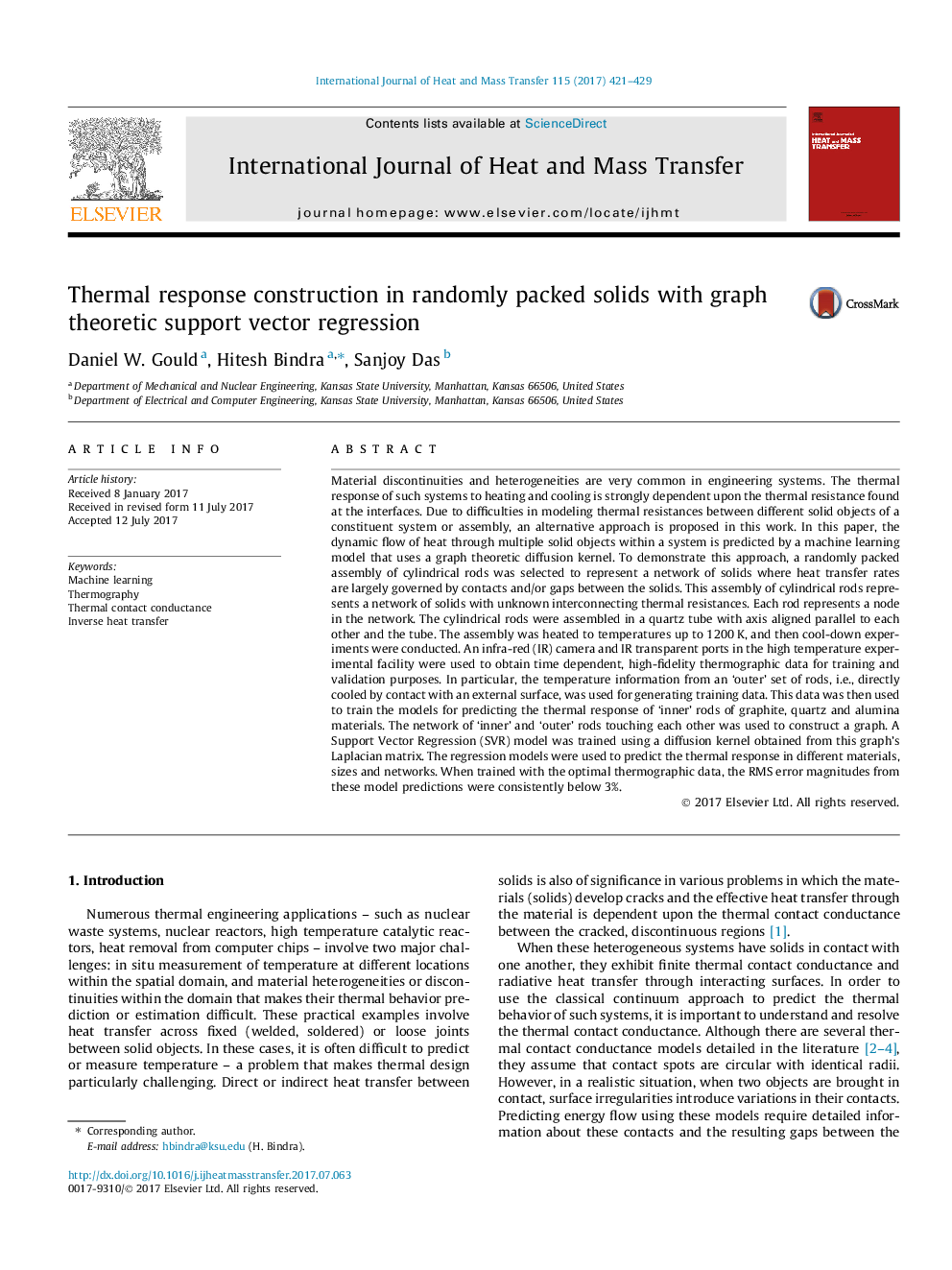| کد مقاله | کد نشریه | سال انتشار | مقاله انگلیسی | نسخه تمام متن |
|---|---|---|---|---|
| 4993479 | 1458026 | 2017 | 9 صفحه PDF | دانلود رایگان |
عنوان انگلیسی مقاله ISI
Thermal response construction in randomly packed solids with graph theoretic support vector regression
ترجمه فارسی عنوان
ساختار پاسخ حرارتی در حالت جامد بسته بندی شده با رگرسیون بردار حمایت از نظریه گراف
دانلود مقاله + سفارش ترجمه
دانلود مقاله ISI انگلیسی
رایگان برای ایرانیان
کلمات کلیدی
فراگیری ماشین، ترموگرافی، هدایت تماس حرارتی، انتقال حرارت معکوس،
موضوعات مرتبط
مهندسی و علوم پایه
مهندسی شیمی
جریان سیال و فرایندهای انتقال
چکیده انگلیسی
Material discontinuities and heterogeneities are very common in engineering systems. The thermal response of such systems to heating and cooling is strongly dependent upon the thermal resistance found at the interfaces. Due to difficulties in modeling thermal resistances between different solid objects of a constituent system or assembly, an alternative approach is proposed in this work. In this paper, the dynamic flow of heat through multiple solid objects within a system is predicted by a machine learning model that uses a graph theoretic diffusion kernel. To demonstrate this approach, a randomly packed assembly of cylindrical rods was selected to represent a network of solids where heat transfer rates are largely governed by contacts and/or gaps between the solids. This assembly of cylindrical rods represents a network of solids with unknown interconnecting thermal resistances. Each rod represents a node in the network. The cylindrical rods were assembled in a quartz tube with axis aligned parallel to each other and the tube. The assembly was heated to temperatures up to 1200Â K, and then cool-down experiments were conducted. An infra-red (IR) camera and IR transparent ports in the high temperature experimental facility were used to obtain time dependent, high-fidelity thermographic data for training and validation purposes. In particular, the temperature information from an 'outer' set of rods, i.e., directly cooled by contact with an external surface, was used for generating training data. This data was then used to train the models for predicting the thermal response of 'inner' rods of graphite, quartz and alumina materials. The network of 'inner' and 'outer' rods touching each other was used to construct a graph. A Support Vector Regression (SVR) model was trained using a diffusion kernel obtained from this graph's Laplacian matrix. The regression models were used to predict the thermal response in different materials, sizes and networks. When trained with the optimal thermographic data, the RMS error magnitudes from these model predictions were consistently below 3%.
ناشر
Database: Elsevier - ScienceDirect (ساینس دایرکت)
Journal: International Journal of Heat and Mass Transfer - Volume 115, Part A, December 2017, Pages 421-429
Journal: International Journal of Heat and Mass Transfer - Volume 115, Part A, December 2017, Pages 421-429
نویسندگان
Daniel W. Gould, Hitesh Bindra, Sanjoy Das,
